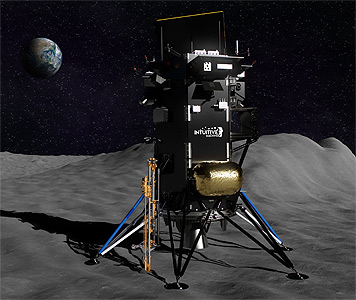 Illustration of Intuitive Machines' second moon landing attempt in late 2024.
Illustration of Intuitive Machines' second moon landing attempt in late 2024.
The latest generation of unmanned moon explorers is yielding uneven results in 2024, but scientists say more high-profile missions will target Earth's neighbor over the next several months.
Intuitive Machines tried the first moon landing by an American private company in February. It had partial success and the company is slated to try again later this year.
University of Arizona lunar researcher Jeff Andrews-Hanna says occasional disappointments from robotic spacecraft should be expected.
“Not every mission is going to come off without a hitch, but we have a lot of exciting missions coming up," he explained.
Chinese scientists used a robotic explorer to return the first sample of material from the moon’s far side last month. Andrews-Hanna notes it’s a significant milestone for researchers studying the lunar surface.
“Really until we study and sample the far side in depth like we have the near side, we really can’t claim to understand the moon at all.”
NASA plans to send a new golf-cart sized rover called VIPER to the moon in November. Its mission is to dig into craters at the lunar south pole in the ongoing search for water ice.

By submitting your comments, you hereby give AZPM the right to post your comments and potentially use them in any other form of media operated by this institution.